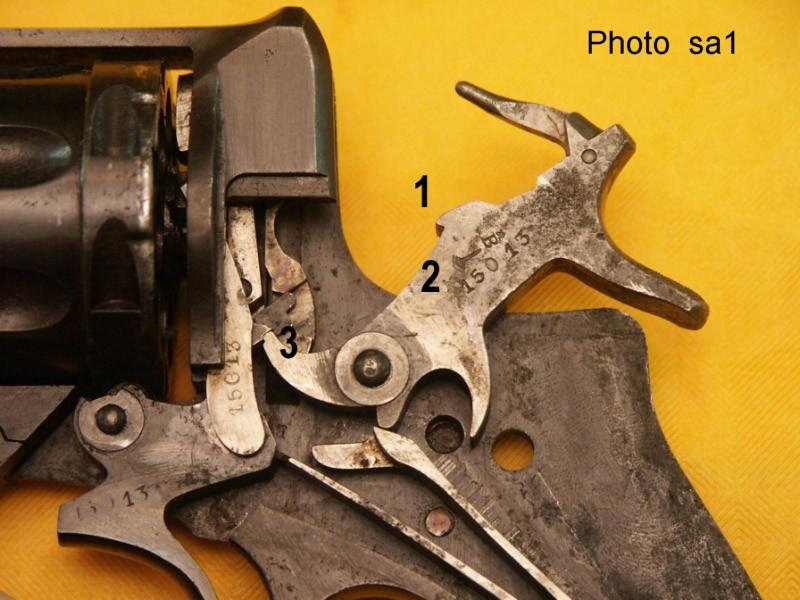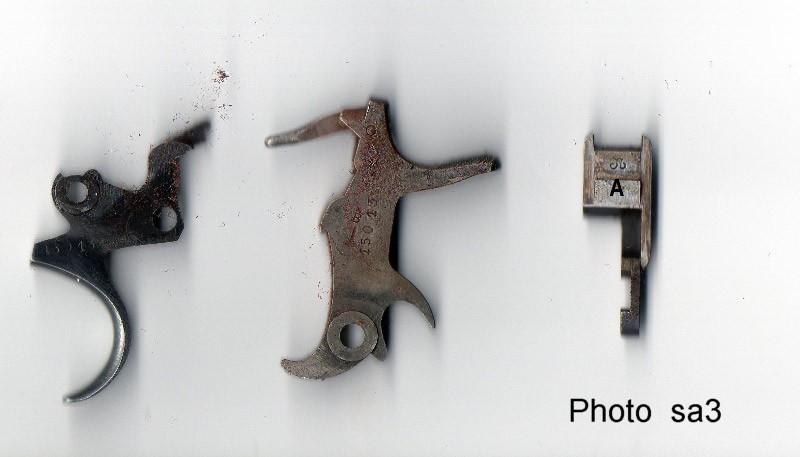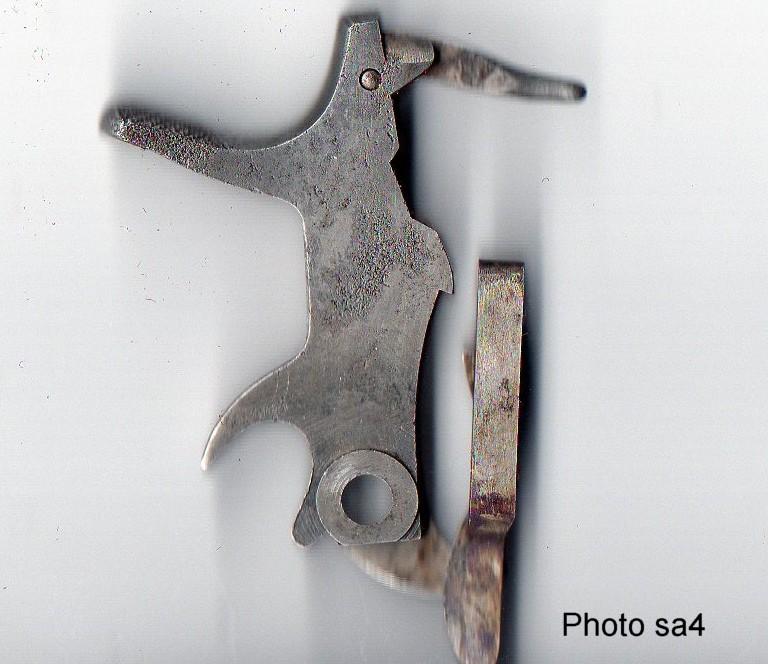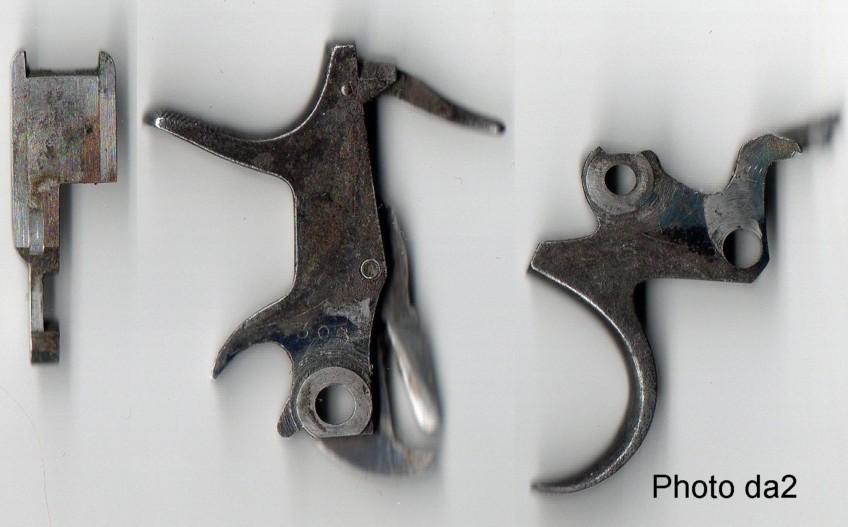THE NAGANT 1895/1898 SINGLE ACTION REVOLVER
Developed in 1895, the famous "gas seal" Nagant revolver was in its days a large step forward compared to its European and American challengers.
Compared to the French 1892 or the Colt Military & Police, it is disadvantaged only on two points, which are its obsolete fixed cylinder, that renders loading and unloading difficult and slow, especially for cavalrymen, and a very long firing pin that can easily break.
These disadvantages are however well compensed by its innovations, which are:
- A seven chamber cylinder instead of the classical six-shot
- A very effective gas seal system by an automatic forward move of the cylinder
- A caliber 7.92 ammo with a stopping power that was superior to that of both the 8 mm Lebel and the .38 Long Colt and cheaper than the American .44 and .45
- A very simple lock mechanism
- An excellent handle and a sufficiently light a weight to allow easy use
- A remarkable accuracy for a weapon of this type.
Of course the gas seal system was far from new, since it already existed on the antique Collier "revolvers" and even on 17th century cylinder muskets; but on those weapons, the cylinder had to be turned by hand and was only held against the barrel by a simple spring, which acted more as a cylinder locking cam and prevented only a part of the gas loss.
On basis of that old principle, the Nagant company has developed an efficient gas seal by creating an automatic system by which the cylinder is pushed forward and locked in that position on 3 points at the moment of firing.
The first models sold to the Imperial Russian army from 1898 on, worked only in single action, but were from the beginning on delivered with a set of 2 additional parts that allow converting any revolver of the model into a conventional double and single action revolver. Those two additional parts are a conventional hammer and a different locking cam.
Let's examine the differences between the two systems.
NAGANT 1898 SINGLE ACTION
Pictures sa1 and sa2 show the complete lock mechanism with hammer on full cock and on resting position.

At first glance one notices the unusual hammer profile, as follows:
1: raise in which a "negative" notch has been cut
2: absence of sear and no provision whatsoever for possible transformation
3: the trigger nose can only be actuated by the hammer bottom.
Picture sa3 shows the trigger, the hammer and the locking cam. On the side facing the hammer, this locking cam shows a protruding "positive" hook (A).

How it works
On the inner side of the trigger nose, there is a small flat projection that engages a notch cut in the bottom part of the locking cam.
The cam moves vertically upwards.
When the hammer is in resting position, the cam hook is exactly under the notch cut in the hammer face, at a distance of about 1/2 millimetre.
If the user squeezes the trigger as if he would want to shoot in the double action mode, the trigger will actuate the locking cam only, since the hammer lacks a sear. The cam moves upwards, and its hook locks immediately into the notch in the hammer, which blocks the entire mechanism. The revolver can only be fired in the single action mode. Picture sa4 shows precisely how the two parts engage each other.

On the other hand, if the user thumbcocks the hammer, the latter will inclinate backwards and leave free way for the locking cam to move upwards. The bottom forward part of the hammer pushes the trigger nose upwards until it reaches the full cock position; on its way up, the trigger nose will push forward the small lever that moves the cylinder forward against the barrel.
At the same moment, the oblique upper part of the locking cam will push forward a small cylindrical block in which the firing channel is cut.
That block will rest firmly against the rear of the cartridge.
In full cock position, the cylinder has moved forward against the barrel, and the rear part of the latter is firmly engaged in the recesses cut at the forward end of the chambers, which provides an effective gas seal. In de same time, the cylinder is held locked in position by both the conventional locking cam and the percussion block that rests against the cartridge, so it can never be pushed back at the moment the cartridges blows.
The system is simple, ingenious and effective.
NAGANT 1898 DOUBLE ACTION
This revolver is absolutely identical, except for the hammer and the locking cam. The replacement cam is flat on the side facing the hammer, while the hammer features a conventional sear.
Picture da1 shows the exposed complete mechanism.
How it works
The revolver works the same way as any other DA/SA revolver. Squeezing the trigger causes the trigger nose to move upwards and engage the sear, pushes the locking cam upwards and the cylinder forwards. In the SA mode, the mechanism works exactly as in the SA version.
Picture da2 shows the flat face of the locking cam and the hammer with sear.

The trigger is identical on both guns.
I added a few pictures of the mechanism assembly for a better comprehension.
Pictures sa0 and da0 show that both weapons are identical.
Marcel